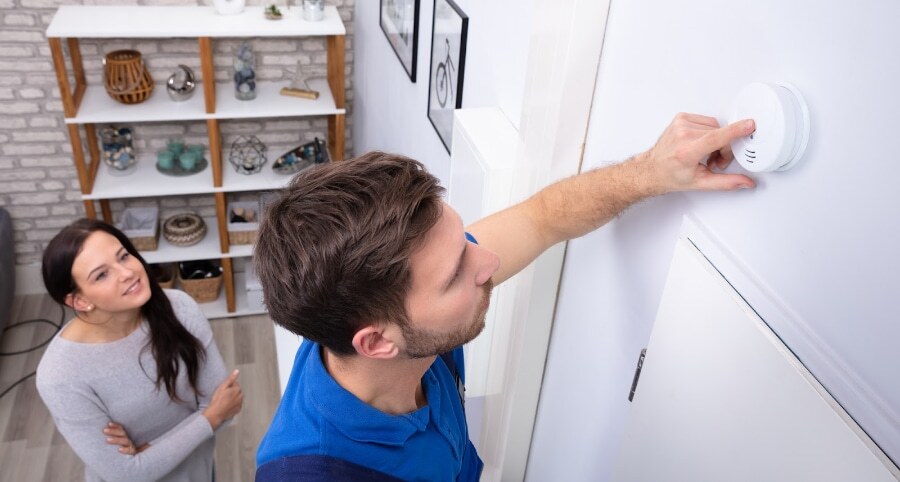Where to install carbon monoxide detectors in your College Station home

Carbon monoxide differs from typical dangers home occupants face as you can’t see or smell it. Despite the fact it’s not noticeable by your senses like fire, smoke, and flooding, you can still simply and effectively safeguard yourself with CO detectors. See where to install carbon monoxide detectors in your College Station property and investigate the benefits of including them in your comprehensive security plan.
Where is CO gas found?
Owing to its absence of color and smell, carbon monoxide has acquired the nickname of the silent killer. It forms as a result of an incomplete combustion of fuels in home appliances like furnaces, generators, fireplaces, and gas stoves. Most people won’t experience difficulties with their fuel-burning appliances if they keep them maintained. But if you neglect regular service or don’t have adequate ventilation, a collection of this potentially lethal gas can result.
Early signs of carbon monoxide poisoning include nausea, vomiting, headaches, and dizziness. These typically arise at smaller quantities of CO. Exposure to higher concentrations for a longer time can lead to cardiorespiratory arrest and death.
Recommendations on where to install College Station carbon monoxide detectors
Each home ought to have a minimum of one CO detector. Really, you should have them on all floors, including basements where fuel-burning appliances are frequently located. Use these suggestions on where to install College Station carbon monoxide detectors:
-
Put one within 10 feet of bedrooms. This positioning is vital, so install it here if you only get a single CO detector.
-
It’s preferred to have a CO detector on all floors of your residence, especially on floors with fuel-consuming appliances.
-
To prevent false alarms, place them at least 10 feet from causes of carbon monoxide, like furnaces. A non-hazardous amount of CO may be released when gas-burning appliances come on.
- Avoid spots beside entryways and windows, as exterior air will lessen the unit’s effectiveness.
-
Put them in spaces above garages.
As you would with smoke detectors, inspect your CO units regularly, keep them clean, and don’t put something immediately beside them. As a general rule, get new detectors every 5-6 years.
Improve safety by integrating CO detectors into your home’s security system
Present-day home security systems provide more layers of protection than you’ve ever had before. In fact, you can incorporate carbon monoxide detectors and other safety devices directly into your system. Doing so will warn you and your monitoring experts whenever your component detects danger. This type of backup is fantastic when you fail to hear the alarm or if you’re not there.
Improve safety by integrating CO detectors into your home’s security system
Present-day home security systems provide more layers of protection than you’ve ever had before. In fact, you can incorporate carbon monoxide detectors and other safety devices directly into your system. Doing so will warn you and your monitoring experts whenever your component detects danger. This type of backup is fantastic when you fail to hear the alarm or if you’re not there.
Get carbon monoxide detectors with your Vivint smart home in College Station
